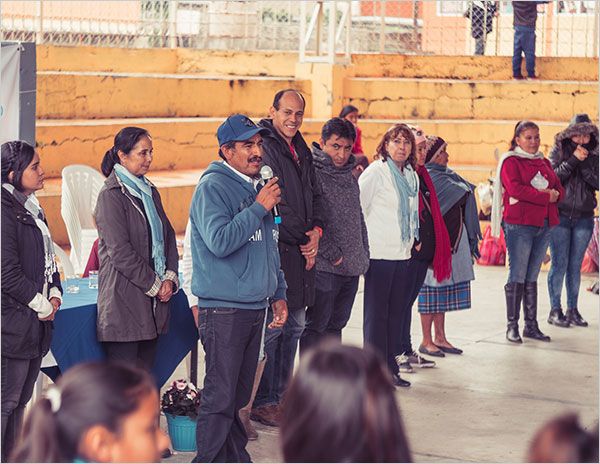
Many mining companies simply assume they know what communities need. This is something I’m thinking a lot about at the moment as my team and I embark on a new host community project in Mexico.
I’m concerned because I’m well aware that these projects can be delivered stillborn – even when well resourced.
When they don’t work it is often because there’s very little dialogue with the beneficiary community. There’s not much analysis and often a mining company just resorts to cookie cutter solutions even though every community is unique and has specific challenges and requirements.
Contrast that with the extensive analysis and thought that goes into studying the geology and the construction of a mine before a single shovel goes into the ground on a newly discovered mineral deposit.
And then somewhere down the line senior management is surprised to hear that the local community is unhappy.
“But we built a school for the community. We put in clean water facilities. We even gave residents the opportunity to have medical visits every month – what’s the problem?” comes the retort from the CEO shocked to learn of community unrest.
Devil is in the detail
And yes it’s true that most impoverished host communities desperately need clean water, energy, food and economic opportunity. How these necessities are delivered is absolutely crucial. Just like with any mining project, the devil is in the detail. Each one is different in some way.
Therefore, before rolling out big‑ticket projects or making promises, I believe it should start with establishing a clear pilot: a modest, carefully designed programme that establishes a community profile, tests core assumptions, and paves the way for establishing high quality projects that meet the needs of communities in a way they prefer them to be met.
After all, how can you adequately deliver on the community’s needs if you don't have a clear picture of people's health, nutrition, economic needs and access to clean water? It’s often due to not understanding these nuances that projects fail, despite considerable investment.
The approach we’re taking is to first do the research (i.e. speaking with the community) and then to set-up a pilot project to help us uncover these nuances. That ensures that the bigger project will be tailored to meet the community’s needs.
It is only by gathering quantitative indicators (food-security scores, access rates to clean water, income levels) and qualitative stories (conversation with teachers, farmers, health workers), that you can build a comprehensive picture of the conditions before the real programme launches.
The big picture
All that data and community feedback gives you something meaningful to compare against, so you can genuinely evaluate whether interventions improved lives.
Gathering that information comes down to conversations. Women’s focus groups, discussions with schoolteachers, community health facilitators, and the local youth. It is about asking these individuals open ended questions such as:
“What keeps families awake at night?”
“How has access to water changed over recent years?”
“Where do you earn your income, and where would you like it to go?”
It’s from the answers to these questions that you can begin to shape the pilot. It might be that clean water is the immediate priority. Maybe there are issues with food costs or for people getting to work in a far away town.
The community profile
Here’s what the assessment should focus on:
The pilot framework
Ideally, the pilot should follow a treatment/control design: households near the mine (within ~10 km) serve as the pilot group, while others farther out function as control. That way you can draw stronger conclusions about the mine’s impact.
Surveys + interviews + workshops: combine structured data with storytelling to enrich the picture.
Divide findings by gender and age cohort, not only to meet equity goals but to empower different voices.
Co-create the next steps with local ‘influencers’ teachers, nurses, farmers, water‑committee members. That ensures ownership and relevance.
Core questions
Once we’ve established the profile, we can ask core questions: For instance, does employment from the mine correlate with improved household nutrition? If not, why? Maybe wages are offset by rising food prices or health costs.
It might be discovered that while jobs exist, clean water remains unreliable or access to clinics is poor. These gaps become the focus of pilot interventions: community‑run water kiosks, health-awareness sessions, food gardens, or small livestock projects.
In essence getting these projects right can deliver tremendous value to these communities and also a high return on investment for the mining company. Namely, they’ll be dealing with a community that appreciates the support it is receiving because they had a major say in its design and delivery. In other words they’ll have a sense of ownership and therefore feel invested in its success.
Basically, it helps establish trust and a stronger relationship between the mining company and the community. And when problems do arise, as they inevitably will, it is easier to resolve them because trust and open dialogue are well established.
A lot of care, planning and investment goes into making a new mine as economically viable as possible. Host community relations deserve the same level of attention. That’s how you establish a social licence to operate.
